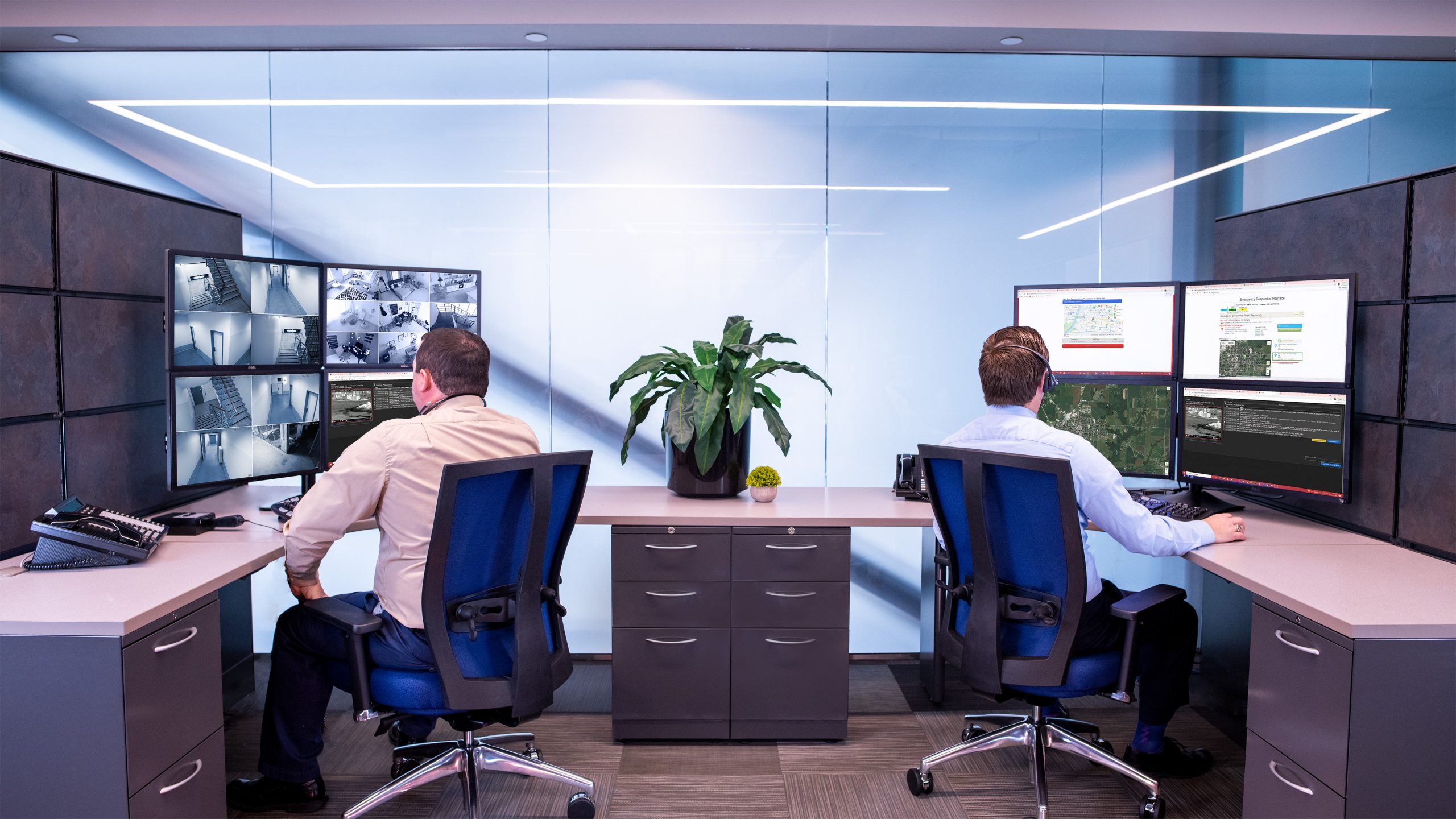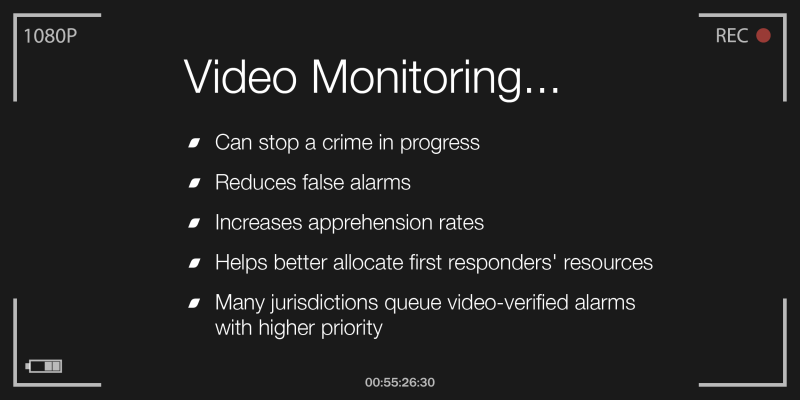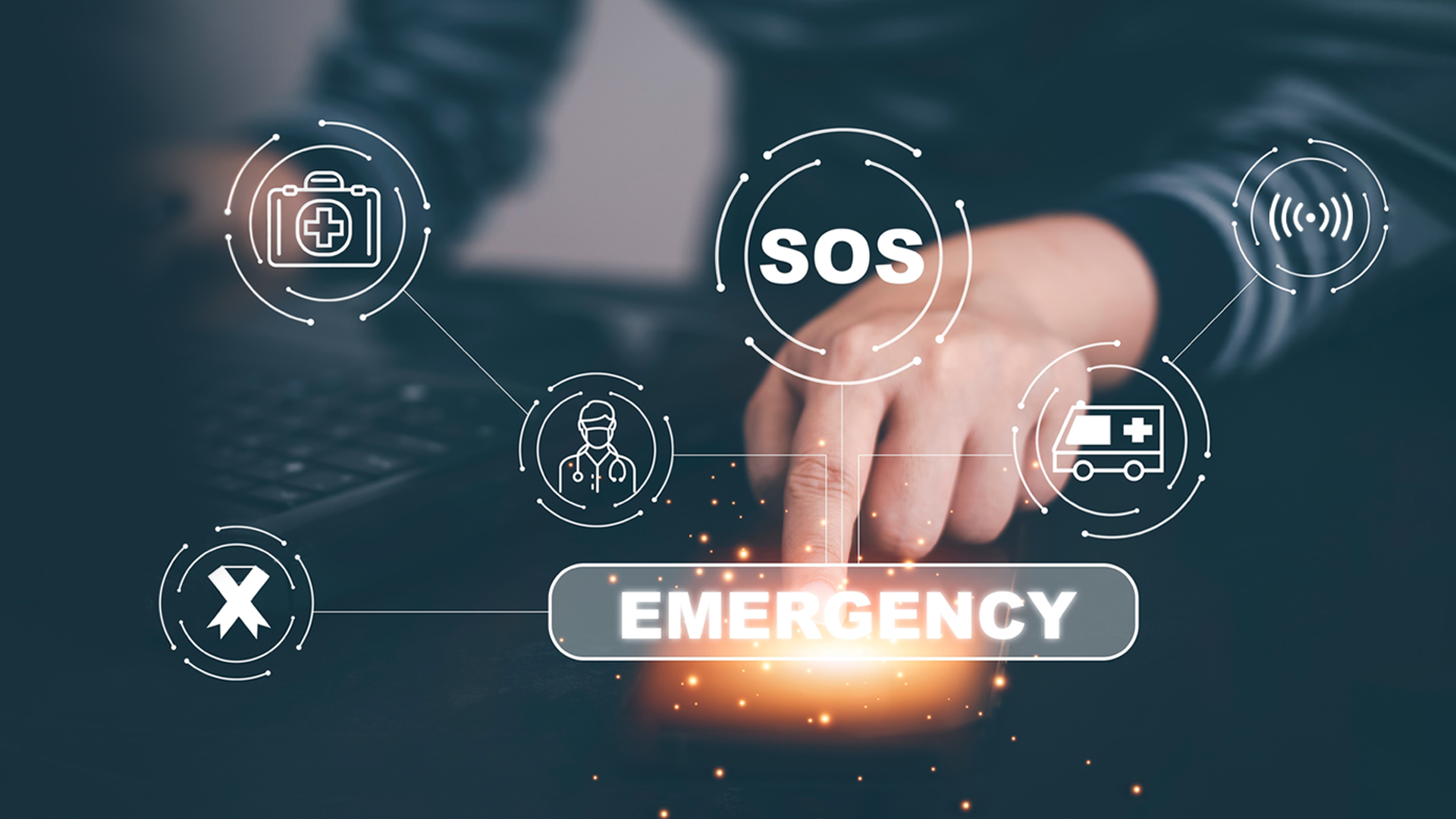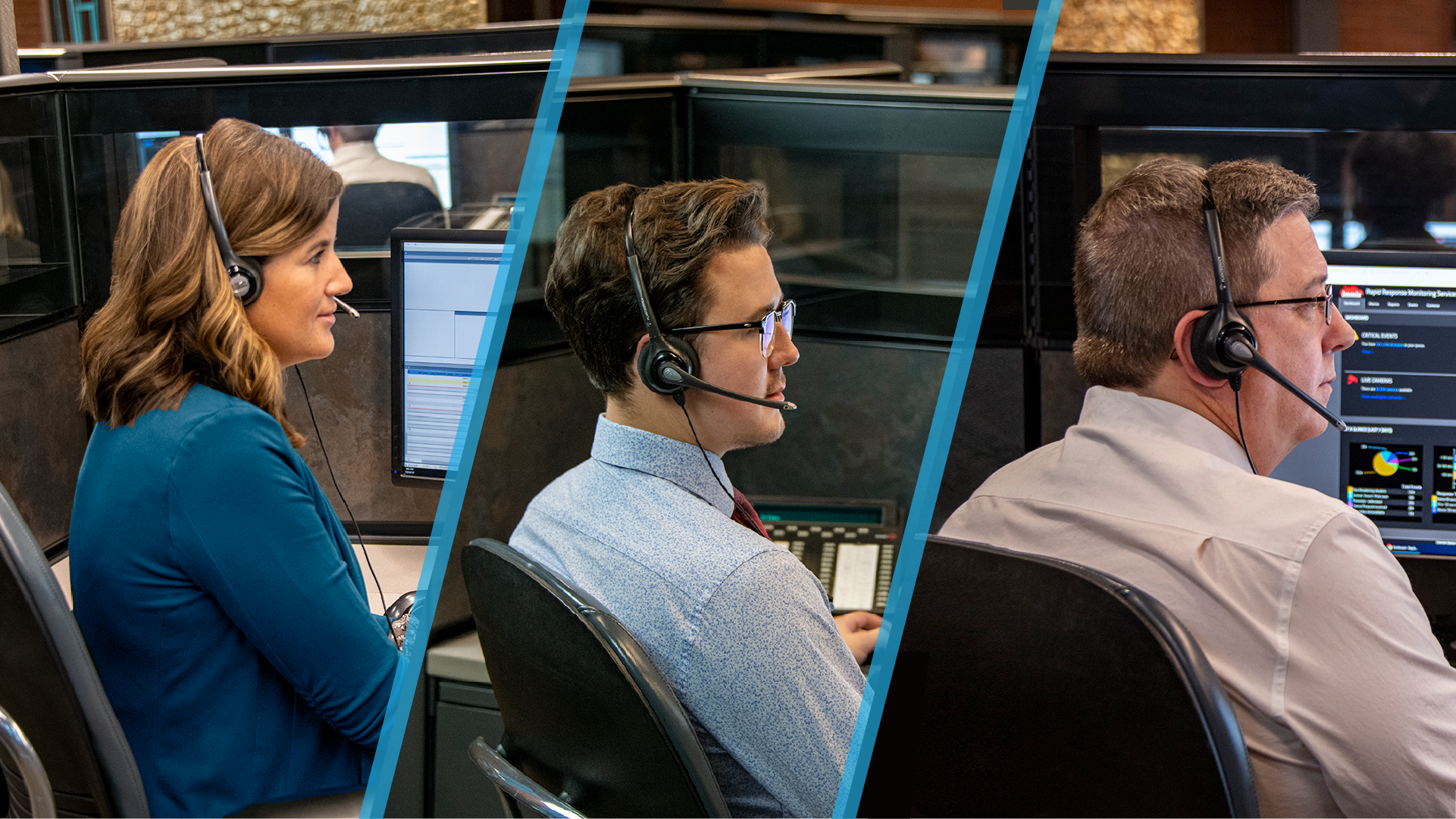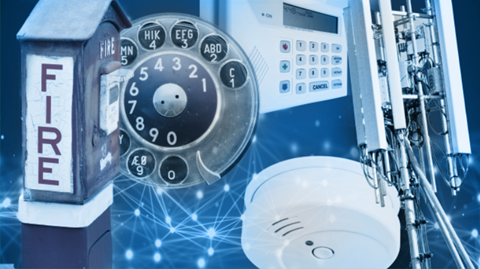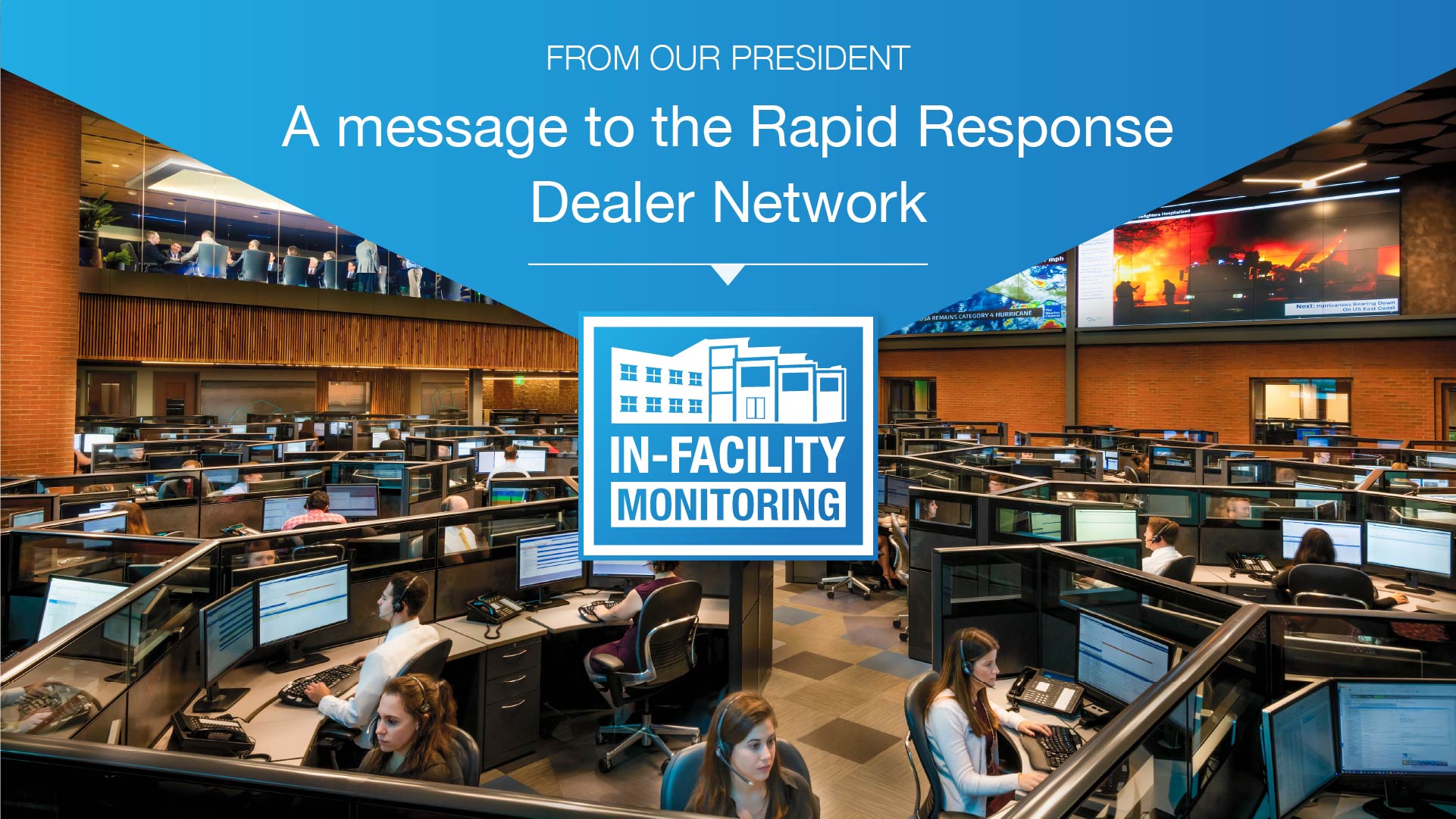Video monitoring is becoming increasingly popular, and more Dealers and Integrators are adding video monitoring services to their offerings than ever before. For one, surveillance video cameras without professional monitoring only document crimes that have already taken place, rather than stopping a crime in progress.
In addition, camera technology and video quality have increased drastically, costs for devices have come down, and it has been proven to reduce false alarms, increase apprehension rates, and help better allocate first responders’ resources. The advantages of video monitoring are so strong that 911 dispatchers have started to queue video-verified alarms with higher priority.
Not only that, many jurisdictions across the United States have stopped responding to non-verified alarms completely, which has opened an opportunity for Dealers to offer a video monitoring surveillance system.
Steps to Consider When Getting Started with Video Monitoring
Step 1: Identify your hardware vendor
Not all hardware vendors support the same video monitoring platforms and equipment. To make an informed decision, consider what equipment, capabilities and platforms you are looking to offer your customers when choosing your hardware vendor.
Rapid Response continuously researches, develops, and implements new security technologies to keep you on the cutting edge and ahead of the competition.
We support hundreds of video products integrated into the comprehensive video monitoring platform, Immix CS by SureView.
We also have direct integrations with video monitoring platforms, including:
These innovative integrated video platforms allow us to support leading video surveillance products and apply our monitoring, notifications and mobile management services uniformly. Our Video Specialists only need to learn these platforms to process signals from dozens of video products. Reach out to talk further, or learn more about our video monitoring services here.
Step 2: Determine how video footage will be delivered to the monitoring center
Once you have a partnership with your hardware vendor in place, you will want to establish how the video will be presented to the monitoring center and what features the customer is looking to get.
Consider these questions
Is the length of the video footage variable or fixed?
Will events trigger pre- and post-event recording?
Will live video footage be provided to the customer and/or monitoring center?
Would you like your customers and monitoring center to be simultaneously notified of alarms so that customers can verify or cancel events?
Does the customer want talk-down or other interactive solutions?
Step 3: Evaluate the network and bandwidth requirements
It is crucial to understand the balance between video quality, the bandwidth available on-site and the delivery speed to the monitoring center.
Depending on the hardware you choose, you may have to interface with the end user’s internet service provider (ISP) or IT department to better understand firewall configuration details and the bandwidth requirements needed. If re-configuring the firewall is not allowed or the current bandwidth is insufficient, using a cloud video platform or upgrading their internet package may have to be considered.
Types of Video Alarm Verification (VAV)
Event-driven VAV
Event-driven video alarm verification, perhaps the most popular form of video verification, consists of a Monitoring Specialist checking on a site in response to an alarm. Alarms can be triggered either through video analytics, a security system, or other presence detection sensors. In most cases, this is the most cost-effective approach and the least prone to false alarms.
Video Guard Tours
Video guard tours consist of a Monitoring Specialist checking on a site through the security cameras at scheduled times. This service is typically augmenting video analytics and other sensors to drive real-time alarms, as the guard tours are only providing periodic site check-ins.
Video Motion Viewers
Motion detection triggers video motion viewers and sends the Monitoring Specialists a short video clip of the activation. These standalone, cell-based systems are common in remote applications where power and network are unavailable. While these systems deliver video footage to the monitoring center quickly, it does so by sacrificing the overall image quality. This should be clearly explained to the end-user to make sure it meets their expectations.
Tips for Deploying Video Monitoring
Offer talk down
Talk down serves as a crime deterrent and has proven to be an effective tool for protecting remote sites and critical assets. In addition, systems that offer interactive texting and other customer-facing interfaces will increase the value of the service.
Maintain the system properly after installation
Ongoing maintenance is necessary to keep the security system operating optimally. This routine should include inspecting lenses for damage or dirt, ensuring there is a strong network connection, trimming landscaping to keep the view open and inspecting power supply components.
Ensure your monitoring center provides in-facility monitoring exclusively
In an attempt to reduce staffing costs, many monitoring centers have outsourced their video monitoring services internationally or have flexed the regulations to allow their employees to monitor from home. Both approaches give room for multiple security, liability, and quality assurance issues in a business where promising 24/7 protection and peace of mind is the core of the mission.
At Rapid Response, 100% of our Monitoring Specialists work from our multi-redundant, secure facilities to ensure the highest level of reliability and quality. Learn more about our monitoring facilities and standards here.
Store data in a secure platform
Video surveillance monitoring footage often contains sensitive information. Ensure all login information is provided to trusted individuals, practice a culture of strong password requirements, and keep the number of authorized users to a minimum. Being able to control access is paramount when it comes to security.
Test camera sensitivity before activating the account
It is recommended to put the account “on test” for a few days before going online to test camera sensitivity. It is likely that the camera will need analytics tuning to prevent it from being triggered by cars, trees or small animals. This initial test helps prevent excessive activity, charges and false alarms.
Conduct vulnerability tests for all IP video cameras regularly
It is critical that Dealers and customers take appropriate measures to protect video monitoring systems from cyber threats. Test all protocols, hardware, and firmware and ensure each video monitoring component has been thoroughly assessed. Some manufacturers and platforms incorporate real-time cyber threat detection into their services which is a valuable add-on to the video monitoring service.
Video monitoring is among the most effective methods of reducing crime, increasing response times, and reducing false alarms. Following this guide will help avoid some of the most common issues and pitfalls that can arise and ultimately offer the end-user a better customer experience.
